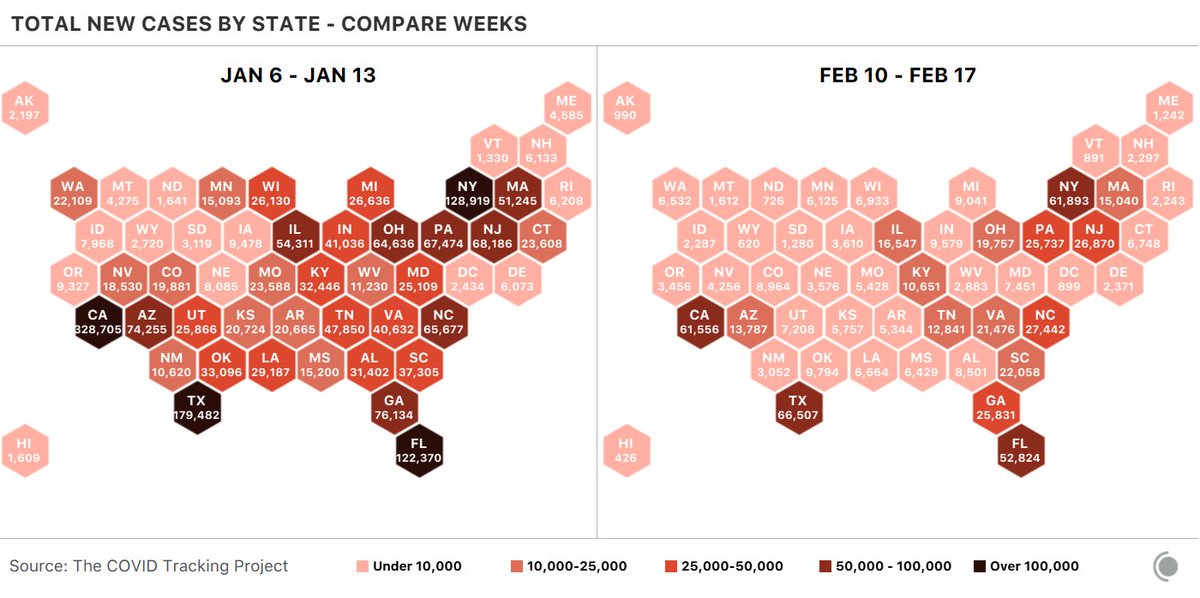
Our weekly update is published. All major indicators of COVID-19 transmission in the US continue to fall rapidly. Deaths are down 20% from last week. covidtracking.com/analysis-updat… 

Although states are still reporting large numbers of cases, many parts of the country show absolute levels much closer to what we saw before the most recent surge accelerated nationally in October. 

Every region and sub-region of the US now shows substantial declines in the number of hospitalized COVID-19 patients. 

The effects of the vaccines are finally showing up in the data, and right where we want them: deaths in long-term-care facilities are declining rapidly not just in absolute numbers, but as a share of COVID-19 deaths in the whole country. 

We urge caution in interpreting any wobbles in the data in the next week or two, given disruptions from the storms in Texas and elsewhere.
The CDC has a new COVID Data Tracker Weekly Review that is simple and useful, as well as a good starting point for understanding what is available in federal government data repositories. cdc.gov/coronavirus/20…
• • •
Missing some Tweet in this thread? You can try to
force a refresh














